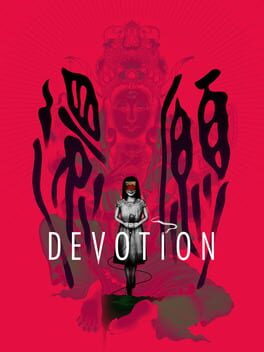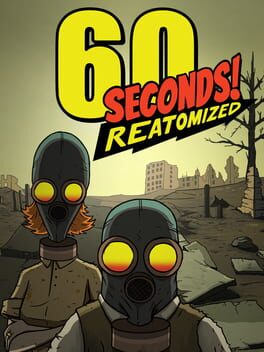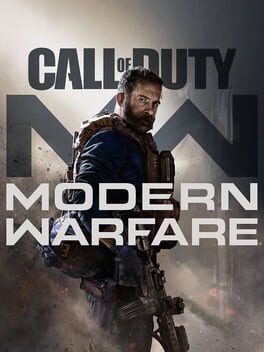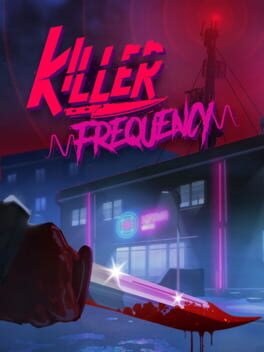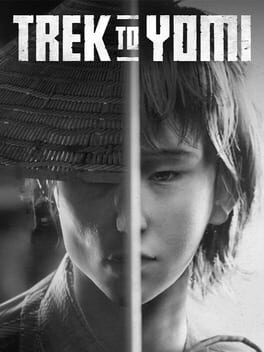Rezlo
BACKER
Arkham Asylum starts off strong by getting right into the action, and does so in an ideal intro to the Rocksteady Universe: by taking place in an asylum filled with a plethora of batman’s rogues gallery. In this, I feel the game particularly succeeds. It does a great job of making the world feel lived in, as well as whetting the villain appetite just enough to keep you wanting more. On top of that the whole place has this delightfully dreary mood that really hits home the theme of claustrophobic madness. Elevated by the fact that the story feels like a classic Batman story you’d see on a Saturday morning cartoon, as they even got Mark Hamill and Kevin Conroy to voice the fateful duo.
The combat is top-tier satisfaction, not unexpected coming from the Dark Knight, but don't expect any real difficulty or complexity. If you understand the basic controls the game is a cake-walk, so I’d recommend playing on the hardest difficulty even if you’re new. Additionally, most of the boss fights are sadly quite similar, with Ivy and especially Crane being the standouts in ingenuity.
Beyond the main story mode is a challenge mode, a nice distraction for whenever you want to sink a couple hours in the hectic combat mode or the more stealthy predator missions. Luckily, you have more than just your wits and fists to aid you, as both the challenge mode and the main story do well in providing a small yet versatile group of gadgets that can be used offensively and for traversal. Which is especially useful in completing the optional Riddler collect-a-thon, a side mission used to further reveal information about the batman mythos. That being said, while Arkham Asylum is a game complemented by a fondness for the caped crusader, its enjoyability extends far beyond the hardcore fans.
The combat is top-tier satisfaction, not unexpected coming from the Dark Knight, but don't expect any real difficulty or complexity. If you understand the basic controls the game is a cake-walk, so I’d recommend playing on the hardest difficulty even if you’re new. Additionally, most of the boss fights are sadly quite similar, with Ivy and especially Crane being the standouts in ingenuity.
Beyond the main story mode is a challenge mode, a nice distraction for whenever you want to sink a couple hours in the hectic combat mode or the more stealthy predator missions. Luckily, you have more than just your wits and fists to aid you, as both the challenge mode and the main story do well in providing a small yet versatile group of gadgets that can be used offensively and for traversal. Which is especially useful in completing the optional Riddler collect-a-thon, a side mission used to further reveal information about the batman mythos. That being said, while Arkham Asylum is a game complemented by a fondness for the caped crusader, its enjoyability extends far beyond the hardcore fans.
2019
Devotion is quite a ways off from what I expected it to be. Since I like to go in blind to most games beyond their short description, especially if it’s a horror or narrative heavy game, this often means that I have little expectations beyond what it says on the tin. For Devotion that means all I knew was that it would be a 1980s Taiwan horror game, presumedly about… Devotion. And call it stereotyping but I was very much anticipating a by-the-books but by no mean unwelcome ghost game. It goes a bit deeper than that though.
Similar to Transference, this is more a game about family than the underlying creep and dread of a boogeyman stalking you. Information you learn about yourself, your daughter, and your wife is told primarily through artistic vignettes, souvenirs, and notes, told over the snapshot duration of many years. Luckily unlike Transference, I think this game did a great job in not only defying my expectations, but in making me happy that it did. It did the unthinkable, it made me care to learn more about it’s titular family. As the name suggests, the game is a tale about how desperate devotion on the part of the player character, the father, can lead a man down a dark path to save his family. It’s a sad ballad that I could dissect set piece by set piece, but for the sake of brevity and the small possibility that I can get someone else to play this game, I won’t elaborate on any more spoilers here. I’ll just add as a last note on the story front that the passage of time is portrayed fantastically in the design and wear of the apartment complex your family lives in as you explore your past, creating a wonderful narrative and aesthetic harmony.
While I said this wasn’t a traditional haunted house, don’t think that means there won’t be any scares or legitimately horrific events. In a surprise twist this game has some of the best toe-curling body horror I’ve seen, realism be damned. And before you think this is just another PT walking simulator clone with a little fluff added on, I’m glad to say there’s some super creative gameplay segments beyond walking nondescript room to nondescript room that kept me properly engaged. Some are cute, some are ethereal, and some are quite unnerving, either by nature of the story or with the help of some masterly crafted ambience. It even has a half-decent chase sequence, with the caveat that it would have been vastly improved if our player character moved faster than a light jog. Regardless, it was short and gave the player some visceral, horror-fueled urgency that the rest of the game doesn’t quite touch on.
It’s weird how in many ways I find Devotion to be similar to Layers of Fear - another walking simulator where you uncover the dark pieces of your past - and yet I enjoyed it so much more. I think the depth of story, a clear creative throughline, and genuinely well-crafted sections beyond JUST notes made it so much more intriguing throughout, even if it wasn’t what I was initially hoping for. Devotion also has this remarkable, almost claylike look to everything that weirdly takes me back to games of the PS3 era. I’m not sure why, but I love it. Inscryption is kind of similar, it has an indescribably fuzzy art style to it that makes it oddly endearing. Whatever it is, keep ‘em coming I say.
Similar to Transference, this is more a game about family than the underlying creep and dread of a boogeyman stalking you. Information you learn about yourself, your daughter, and your wife is told primarily through artistic vignettes, souvenirs, and notes, told over the snapshot duration of many years. Luckily unlike Transference, I think this game did a great job in not only defying my expectations, but in making me happy that it did. It did the unthinkable, it made me care to learn more about it’s titular family. As the name suggests, the game is a tale about how desperate devotion on the part of the player character, the father, can lead a man down a dark path to save his family. It’s a sad ballad that I could dissect set piece by set piece, but for the sake of brevity and the small possibility that I can get someone else to play this game, I won’t elaborate on any more spoilers here. I’ll just add as a last note on the story front that the passage of time is portrayed fantastically in the design and wear of the apartment complex your family lives in as you explore your past, creating a wonderful narrative and aesthetic harmony.
While I said this wasn’t a traditional haunted house, don’t think that means there won’t be any scares or legitimately horrific events. In a surprise twist this game has some of the best toe-curling body horror I’ve seen, realism be damned. And before you think this is just another PT walking simulator clone with a little fluff added on, I’m glad to say there’s some super creative gameplay segments beyond walking nondescript room to nondescript room that kept me properly engaged. Some are cute, some are ethereal, and some are quite unnerving, either by nature of the story or with the help of some masterly crafted ambience. It even has a half-decent chase sequence, with the caveat that it would have been vastly improved if our player character moved faster than a light jog. Regardless, it was short and gave the player some visceral, horror-fueled urgency that the rest of the game doesn’t quite touch on.
It’s weird how in many ways I find Devotion to be similar to Layers of Fear - another walking simulator where you uncover the dark pieces of your past - and yet I enjoyed it so much more. I think the depth of story, a clear creative throughline, and genuinely well-crafted sections beyond JUST notes made it so much more intriguing throughout, even if it wasn’t what I was initially hoping for. Devotion also has this remarkable, almost claylike look to everything that weirdly takes me back to games of the PS3 era. I’m not sure why, but I love it. Inscryption is kind of similar, it has an indescribably fuzzy art style to it that makes it oddly endearing. Whatever it is, keep ‘em coming I say.
I remember playing this game a few years ago, back before the Reatomized version existed. Maybe it’s just me, but it feels a lot more difficult than it should be. And I’ll admit it, I’m awful at this game. The premise is you’re given around a minute to collect supplies and family members before a bomb drops and must hold up in a fallout shelter until help arrives. Before that you have to decide how to ration supplies, who should go out, and what messages to respond to outside the shelter. The writing is utterly hilarious, satirical, and the only reason I played this game as long as I did. Each in-game day you’re given updates on the family’s mood, hunger, and new developments that require choices. The most important choices being who to send out when and whether to let someone in. With chance playing a huge part every option to go out can be the last choice you make or the first step in getting help.
That’s where the difficulties become relevant. At lower difficulties you’re given more supplies to start and greater luck in encounters with others. Now maybe I just have the worst intuition known to man, but I always have such terrible luck in this game. Even on easy difficulty I was having trouble staying alive until the military arrived. With how many supplies there are it’s far too easy to be utterly helpless because you’re missing a single tool, or it broke when you decided to send someone out. 60 Seconds is like a series of endless unfortunate events. Every time I make a choice it goes as badly as possible, leaving my poor McDoodle family a poor broken husk when they wither away on day 60. Okay fine, it’s meant to be replayed over and over and each session is only around an hour. The problem is the game is super repetitive. Situations will repeat often, making each playthrough relatively the same. It’s like second verse, same as the first in digital form. It’s a fine game, but one I would recommend tenuously as not ideal for binging
That’s where the difficulties become relevant. At lower difficulties you’re given more supplies to start and greater luck in encounters with others. Now maybe I just have the worst intuition known to man, but I always have such terrible luck in this game. Even on easy difficulty I was having trouble staying alive until the military arrived. With how many supplies there are it’s far too easy to be utterly helpless because you’re missing a single tool, or it broke when you decided to send someone out. 60 Seconds is like a series of endless unfortunate events. Every time I make a choice it goes as badly as possible, leaving my poor McDoodle family a poor broken husk when they wither away on day 60. Okay fine, it’s meant to be replayed over and over and each session is only around an hour. The problem is the game is super repetitive. Situations will repeat often, making each playthrough relatively the same. It’s like second verse, same as the first in digital form. It’s a fine game, but one I would recommend tenuously as not ideal for binging
Modern Warfare 2019 was a bit of a reentry into the COD-osphere for me. After many formative years spent with the franchise I got a bit fatigued with the lack of innovation and general oversaturation of the shooter market. The only reason I even gave this 2019 reboot a try was because for the first time in a long time, the clips I saw of the game actually made me want to play it. And after playing the game enough to unlock the mastery camo for ALL weapons, I can confidently say I do not regret that decision. If nothing else can be said, Modern Warfare is one of the nicest feeling shooters I’ve ever played. The buttery smooth movement, new features (finishers, NVGs, gunfight mode, doors), and revamped animations really breathed life into a long-retired franchise for me.
Modern Warfare’s larger emphasis on attention to detail and its semi-serious tone is a nice change of pace from the nearly endless Michael Bay-like pile of mindless action that COD has leaned into a little too hard the last few years. It’s still unmistakably Call of Duty, but almost everything it adds to the recipe builds on the franchise’s formula in new and fun ways.
The story is a decent romp, with its shining moments being the ones that are the most serious, historically reminiscence, or tactically immersive. Hopefully they can build on more moments like these in future installments. The maps are gorgeous and I can respect the desire to try something other than endless three lanes, but some maps, and especially the ground war maps, suffer from being a bit too linear and open. Not just a sincere revival of the franchise, Modern Warfare is a fantastic casual shooter that reinforces why Call of Duty is the king of dumb fun.
Modern Warfare’s larger emphasis on attention to detail and its semi-serious tone is a nice change of pace from the nearly endless Michael Bay-like pile of mindless action that COD has leaned into a little too hard the last few years. It’s still unmistakably Call of Duty, but almost everything it adds to the recipe builds on the franchise’s formula in new and fun ways.
The story is a decent romp, with its shining moments being the ones that are the most serious, historically reminiscence, or tactically immersive. Hopefully they can build on more moments like these in future installments. The maps are gorgeous and I can respect the desire to try something other than endless three lanes, but some maps, and especially the ground war maps, suffer from being a bit too linear and open. Not just a sincere revival of the franchise, Modern Warfare is a fantastic casual shooter that reinforces why Call of Duty is the king of dumb fun.
2023
Killer Frequency is a super neat indie game that puts you in the shoes of a late night 80’s radio DJ in a small town that’s being plagued by murders. Seeing that you’re the only one available and qualified to take calls, you're tasked with answering 911 emergencies when the police department becomes indisposed of. As a rogue whistle-happy killer descends on the town it’s up to you and your producer Peggy to use your wits and quick thinking to solve puzzles, suss out lies, stop the killer, and ultimately lead people to safety as you simultaneously put on an equally killer radio show. The gameplay mostly consists of choosing dialogue options while at your desk, inspecting clues, and occasionally going outside your room to explore the radio station or retrieve an item.
The radio layout is delightfully comfy, and the DJ setup is fun to interact with. I do wish they leaned more into it. Implementing some more radio mechanics and giving more to do than clicking the call button and putting on records would have been ideal. Not to say it should have been a realistic simulator game, just a bit more underlying connection to the actual work of a radio DJ is all. The soundboard was a start, but entirely cosmetic and easily forgettable. What we did get I loved, but it left me wanting slightly more, indie game or not. Even without that though Killer Frequency did a good job of immersing you into the mind and world of late-night hosting. It’s less a dysfunction of the game’s offerings and more so my own desire to get greater engrossed in the world.
I’m particularly impressed by how Killer Frequency is able to instill a sense of persistent isolation, with all the lone wandering you do around the station ratcheting up the tension effectively. I especially like the pace in which it slowly reveals more and more questionable parts of the locale in an organic way, going from benign to increasingly sinister. All in the purview of a small radio station at the dead of night. Each room is a new place to investigate, even letting you find hidden records and clues early if you look hard enough. In its totality the game is neither big nor a Sherlockian challenge, but it does a great job at making you feel like it is. Barring one exception, the game is remarkably proficient at hitting above its expectation in mood and pacing. We’ll get to that exception in a minute.
The story, writing, and voice acting give light to the rest of the game, making it more of a dark comedy soup than a horror title. The actual mystery and killer themself are given a proper breadth of seriousness, but folks like Ponty of Ponty’s Pizza and jazzy Sandra are there to break it up with some much welcome comedy. That’s to say the game is legitimately superb with its comedic timing, and quite well voiced all around. Every character knows when to be silly and when to be serious. It never feels kitschy or ill-timed, playing perfectly into the 80’s over-the-top slasher aesthetic. The dialogue choices also let you play into the comedy or go for a more straightforward approach, giving you a degree of control over the tone of the story. Of course that doesn’t mean the dialogue options are superficial, you’re just not punished for making light of the situation unless you’re doing so during a time-sensitive choice.
The actual bread and butter of the game, its puzzles, are just the right amount of accessible. One could argue they hold your hand a little too much in finding clues, but you’re just as likely to find them beforehand anyway, and you could always decide to not accept hints for where something is. The puzzles themselves range from straightforward to moderately tough, a scope that works well here. Thankfully, you’ll never be asked to memorize something unreasonably long or constantly make timed choices, but I’d advise reading everything twice to make sure you’re getting the full picture. A lot of choices come with hidden caveats and clues that can be easy to miss, and in a game where every choice may be life or death it’s important to dot your i’s and cross your t’s.
This leads me into the only disappointment I had with the game. All throughout the game there’s a constant invisible threat of the killer showing up on your doorstep. With little to defend yourself with and having to venture out further and further away from your safe broadcast room, it’s all but spelled out this would lead to confrontation eventually. I thought for sure there would be at least one tense situation where you’d have to evade the killer as you sneak from hidden corner to hidden corner. There were more than a few clear moments where this could happen near the end but the time never came. The focus on dialogue and puzzle-solving is fantastic, yet I really think they missed an excellent opportunity to capitalize on the tension building with a little one-on-one traditional encounter.
Nevertheless, when push comes to shove the strengths of Killer Frequency far outweigh its weaknesses. While it won’t take longer than a day to finish it’s more than worth the pickup. I finished it in one marathon sitting around the same time of night the game takes place, no doubt helping immerse myself even more into the world. Truly all you need to have a good time is an appreciation for groovy music, snappy dialogue, and succinct puzzles.
The radio layout is delightfully comfy, and the DJ setup is fun to interact with. I do wish they leaned more into it. Implementing some more radio mechanics and giving more to do than clicking the call button and putting on records would have been ideal. Not to say it should have been a realistic simulator game, just a bit more underlying connection to the actual work of a radio DJ is all. The soundboard was a start, but entirely cosmetic and easily forgettable. What we did get I loved, but it left me wanting slightly more, indie game or not. Even without that though Killer Frequency did a good job of immersing you into the mind and world of late-night hosting. It’s less a dysfunction of the game’s offerings and more so my own desire to get greater engrossed in the world.
I’m particularly impressed by how Killer Frequency is able to instill a sense of persistent isolation, with all the lone wandering you do around the station ratcheting up the tension effectively. I especially like the pace in which it slowly reveals more and more questionable parts of the locale in an organic way, going from benign to increasingly sinister. All in the purview of a small radio station at the dead of night. Each room is a new place to investigate, even letting you find hidden records and clues early if you look hard enough. In its totality the game is neither big nor a Sherlockian challenge, but it does a great job at making you feel like it is. Barring one exception, the game is remarkably proficient at hitting above its expectation in mood and pacing. We’ll get to that exception in a minute.
The story, writing, and voice acting give light to the rest of the game, making it more of a dark comedy soup than a horror title. The actual mystery and killer themself are given a proper breadth of seriousness, but folks like Ponty of Ponty’s Pizza and jazzy Sandra are there to break it up with some much welcome comedy. That’s to say the game is legitimately superb with its comedic timing, and quite well voiced all around. Every character knows when to be silly and when to be serious. It never feels kitschy or ill-timed, playing perfectly into the 80’s over-the-top slasher aesthetic. The dialogue choices also let you play into the comedy or go for a more straightforward approach, giving you a degree of control over the tone of the story. Of course that doesn’t mean the dialogue options are superficial, you’re just not punished for making light of the situation unless you’re doing so during a time-sensitive choice.
The actual bread and butter of the game, its puzzles, are just the right amount of accessible. One could argue they hold your hand a little too much in finding clues, but you’re just as likely to find them beforehand anyway, and you could always decide to not accept hints for where something is. The puzzles themselves range from straightforward to moderately tough, a scope that works well here. Thankfully, you’ll never be asked to memorize something unreasonably long or constantly make timed choices, but I’d advise reading everything twice to make sure you’re getting the full picture. A lot of choices come with hidden caveats and clues that can be easy to miss, and in a game where every choice may be life or death it’s important to dot your i’s and cross your t’s.
This leads me into the only disappointment I had with the game. All throughout the game there’s a constant invisible threat of the killer showing up on your doorstep. With little to defend yourself with and having to venture out further and further away from your safe broadcast room, it’s all but spelled out this would lead to confrontation eventually. I thought for sure there would be at least one tense situation where you’d have to evade the killer as you sneak from hidden corner to hidden corner. There were more than a few clear moments where this could happen near the end but the time never came. The focus on dialogue and puzzle-solving is fantastic, yet I really think they missed an excellent opportunity to capitalize on the tension building with a little one-on-one traditional encounter.
Nevertheless, when push comes to shove the strengths of Killer Frequency far outweigh its weaknesses. While it won’t take longer than a day to finish it’s more than worth the pickup. I finished it in one marathon sitting around the same time of night the game takes place, no doubt helping immerse myself even more into the world. Truly all you need to have a good time is an appreciation for groovy music, snappy dialogue, and succinct puzzles.
2022
This review contains spoilers
Trek to Yomi looks great, plays ok-ish, and is mostly lukewarm. The story could be summarized in essentially two sentences. You’re a student turned warrior after your master dies, making you the new protector from enemies who would do you, your village, and your love interest harm. Lo and behold your village gets attacked, your love interest is killed, and you must decide to stay with her in death or continue to live after defeating your old enemy who destroyed your village. Even that sounds more in-depth than the game is. What the game actually entails is being under constant attack from pillagers and evil spirits as you side-scroll run across an almost 2.5D environment. It’s not bad, it’s just not something they do anything interesting with. If you’ve seen any samurai movie you know this game almost exactly.
I like the way it maintains a pseudo side-scrolling status, where you can sometimes go towards or away from the camera depending on the section. It goes back and forth from 2D movement and 3D movement so fluidly that you don’t even really notice it as you play. Some more environmental puzzles taking advantage of this would have been welcome. Regarding the aesthetics, It goes without saying you should keep the black-and-white film grain on. If you’re playing this game there’s really no reason to turn it off. For the sake of the creator's intent as well as really completing the picture of old samurai flicks. The art design of the game is undoubtedly its strongest point, and it’s quite well done. That withstanding I could have done with a lot less dawdling in Yomi, the death dimension. That dragged on far too long that even the creepy imagery couldn’t compensate.
The fighting is sadly mediocre, and probably the weakest part of the game. I’ll give credit where credits due, they have quite a few combos for so few inputs. It’s just not very engaging, especially seeing as it’s the lone source of interaction. The parry system is also really finicky, sometimes it feels generous and other times it feels demanding. As a general rule you should parry a good bit before their attack actually lands, otherwise they’ll just keep hitting past you, draining your health startlingly quick. All in all, Trek to Yomi is a fine time, but like many indie games before and since, it’s missing that secret ingredient of creative pizzazz.
I like the way it maintains a pseudo side-scrolling status, where you can sometimes go towards or away from the camera depending on the section. It goes back and forth from 2D movement and 3D movement so fluidly that you don’t even really notice it as you play. Some more environmental puzzles taking advantage of this would have been welcome. Regarding the aesthetics, It goes without saying you should keep the black-and-white film grain on. If you’re playing this game there’s really no reason to turn it off. For the sake of the creator's intent as well as really completing the picture of old samurai flicks. The art design of the game is undoubtedly its strongest point, and it’s quite well done. That withstanding I could have done with a lot less dawdling in Yomi, the death dimension. That dragged on far too long that even the creepy imagery couldn’t compensate.
The fighting is sadly mediocre, and probably the weakest part of the game. I’ll give credit where credits due, they have quite a few combos for so few inputs. It’s just not very engaging, especially seeing as it’s the lone source of interaction. The parry system is also really finicky, sometimes it feels generous and other times it feels demanding. As a general rule you should parry a good bit before their attack actually lands, otherwise they’ll just keep hitting past you, draining your health startlingly quick. All in all, Trek to Yomi is a fine time, but like many indie games before and since, it’s missing that secret ingredient of creative pizzazz.

